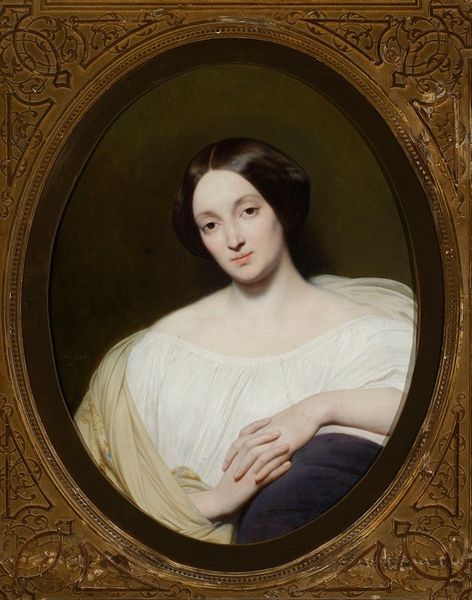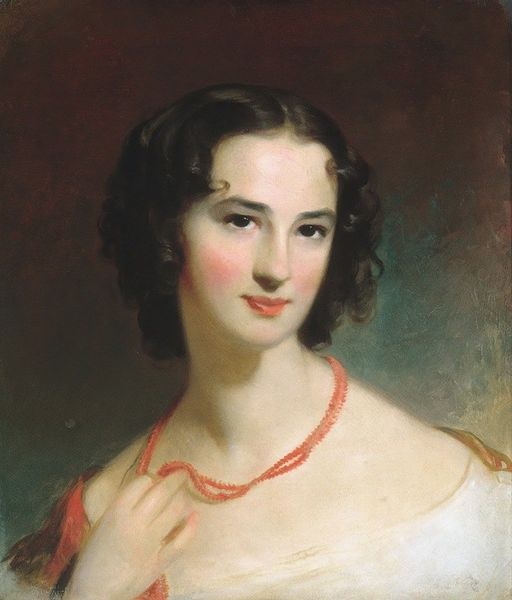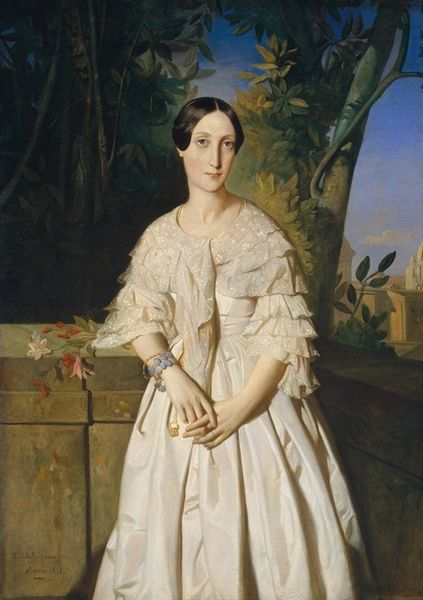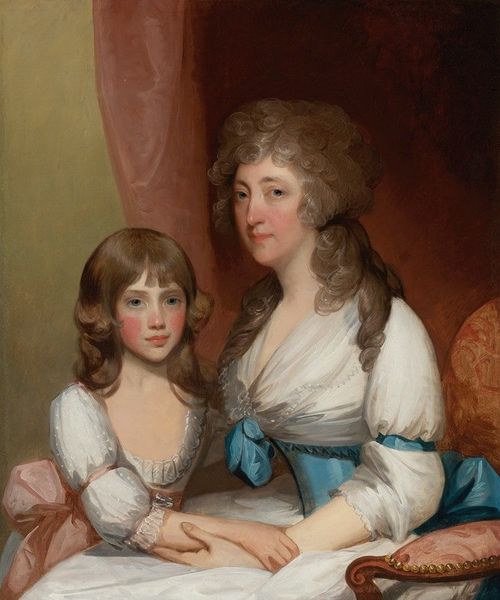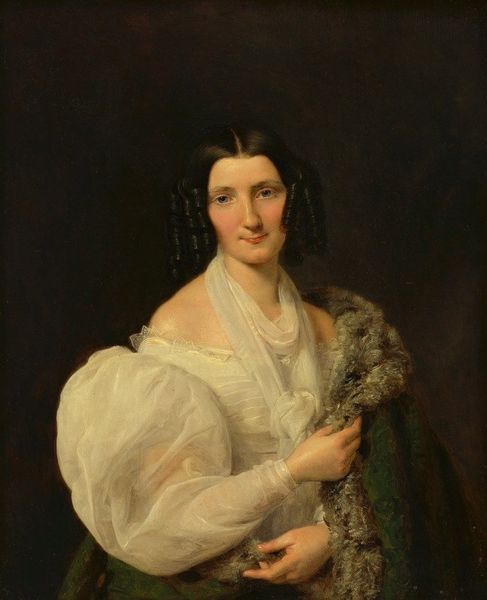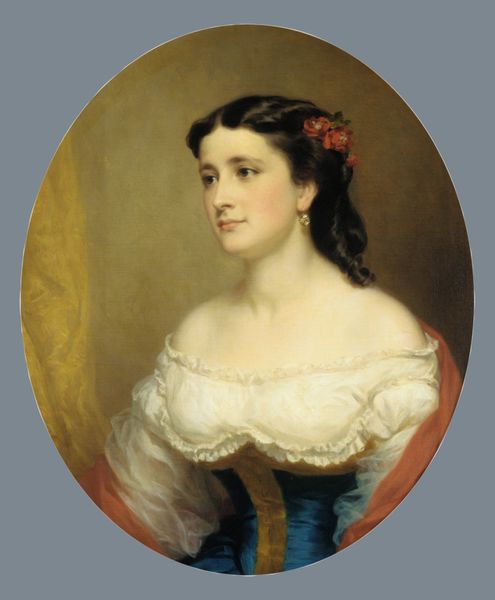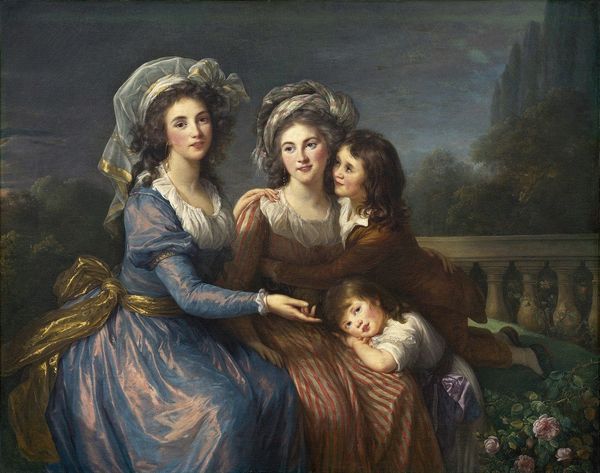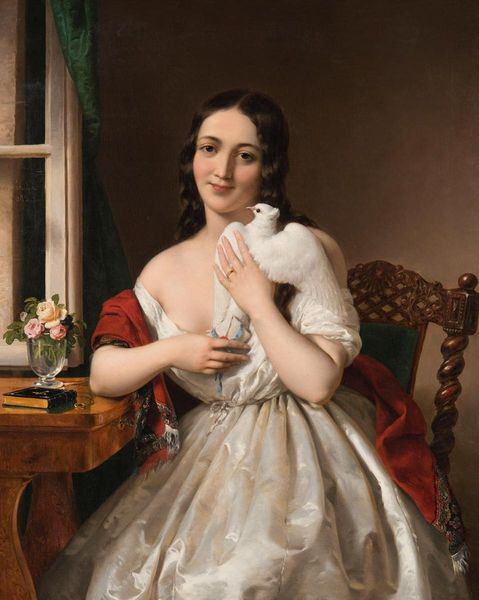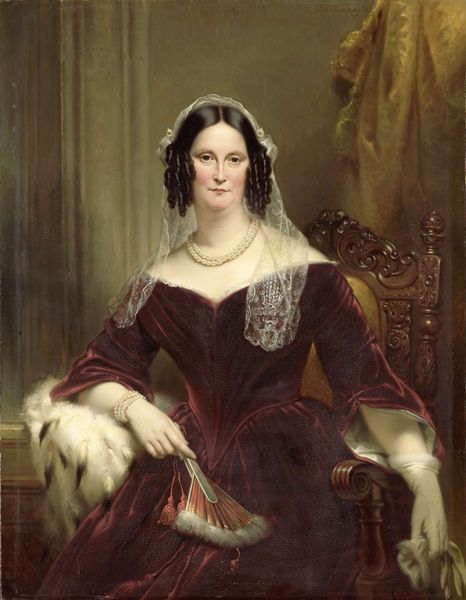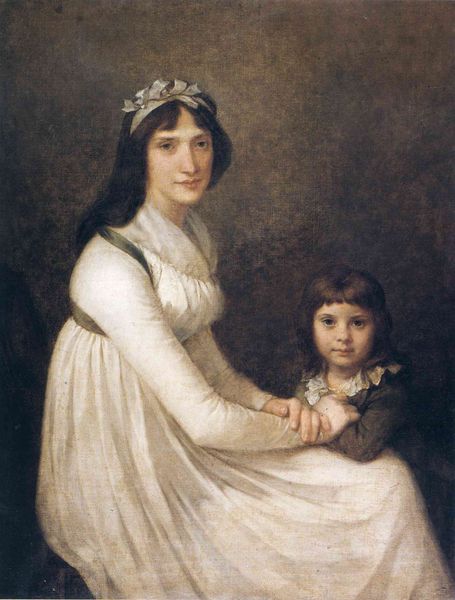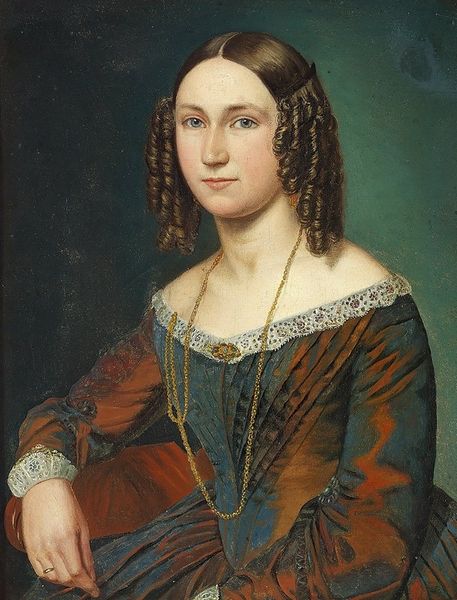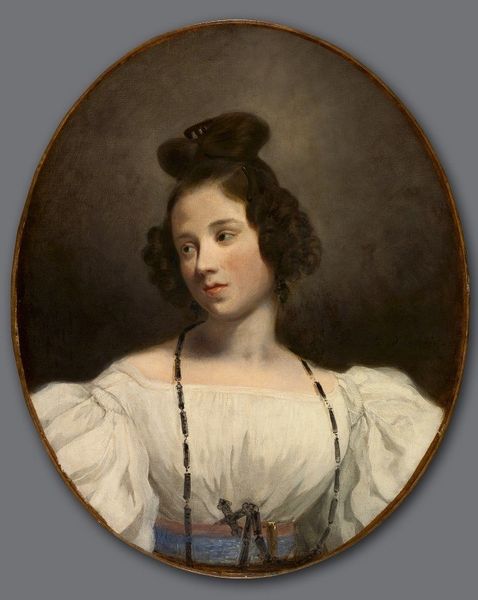
painting
#
portrait
#
figurative
#
painting
#
figuration
#
romanticism
#
genre-painting
Copyright: Public Domain: Artvee
Curator: Painted in 1844, this is Thomas Sully's "The Coleman Sisters". The oil on canvas presents three young women, grouped intimately together. What are your first impressions? Editor: The overwhelming sense is one of polished surfaces. Their skin, the textiles… everything appears so carefully finished and luminous, almost to the point of artificiality. I'm drawn to the depiction of their clothes, though, a material record of the time. Curator: That carefulness strikes me, too, but also that the faces, despite their similarities, carry very different emotional resonances. The woman on the left appears almost mischievous, whereas the woman in the center appears to be serene, almost Madonna-like, while the third on the right holds our gaze directly, assertively. Editor: Interesting that you point that out, I noticed the way Sully depicted the subtle shifts in texture and drape across their shoulders, rendering an implicit contrast. How were these dresses constructed? Were they indeed as shimmering as Sully makes them appear? I'm especially interested in the weave of the fabric on the woman to the left—it seems patterned, hinting at possible manufacturing origins, the labor implied, its origin of construction, the transportation of material… Curator: I can see why you would go there. It reminds us that artistic endeavors require material support, social frameworks of patronage. Here the symbols are in the direct gazes, which suggests self-assurance, but also in the bouquet, hinting perhaps at accomplishment and future potential. It gives off a feeling of upper class achievement and familial legacy. Editor: Yet there’s a quiet modesty too. While those are indications of material comforts, their positioning, composition, feels carefully managed—staged, if you will—but nonetheless hints at the cultural moment's emphasis on feminine accomplishment balanced against a subtle suppression of individual desires and self actualization. The surface treatment, and material splendor speaks volumes about 19th century values of what feminine decorum might look like and entail. Curator: So well observed. Thinking about this, the symbols of achievement that women may aspire to, within constraints, are indeed subtly woven into this picture of genteel accomplishment. Editor: Precisely, so as you look longer you realize there is something unsettling too in the surface qualities of representation, especially in consideration to who the artists was, the context he came from, his other pieces, to then the materials that manifest that context in one way or another. I keep coming back to the question of: “How were the artist’s material relationships informing what ended up as subject matter?”. Curator: An incredibly potent approach that shifts our consideration to see deeper patterns.
Comments
No comments
Be the first to comment and join the conversation on the ultimate creative platform.
